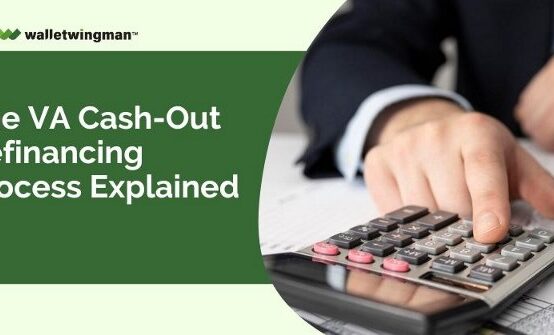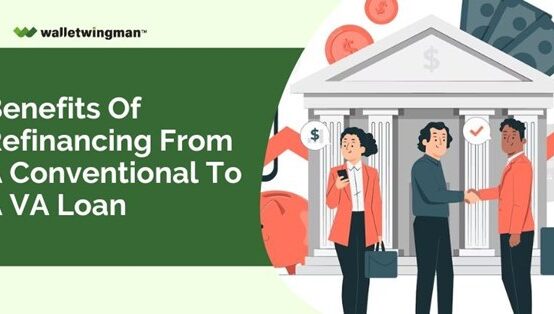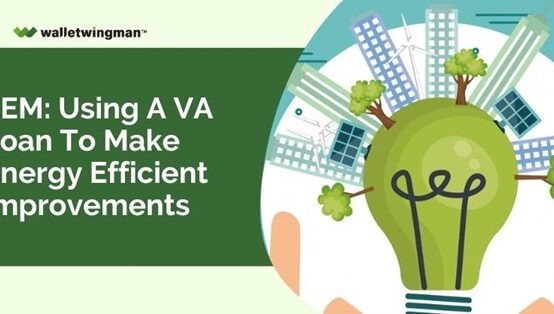Veterans contribute significantly to the economy. Because of this, many financial solutions are designed to meet their specific demands. One such product is the VA loan. There has been consistent demand for these loans throughout the past few years.
Veterans of all ages can benefit greatly from VA loans after they meet the eligibility requirements. The same goes for VA loan refinancing programs. If you want to know how to refinance your VA loan without any hitches, then you should keep reading.
Understanding VA Loan Refinance?
The VA home loan refinance program offers eligible homeowners a straightforward method to reduce their monthly mortgage payments while taking advantage of reduced interest rates. For instance, veteran and active-duty military personnel refinance to a VA loan and receive cash back, which they can spend on anything they want, like wiping off debt or improving their property.
With mortgage interest rates falling below 7% for the first instance since August, the present economic situation affords an excellent opportunity for many military households to benefit and even refinance VA loans to conventional loans.
VA Loan Refinance Options at Your Disposal

Two major options enable VA borrowers to refinance and reduce their interest rates. These are the VA Cash-Out Refinance and the VA Streamline Refinance, sometimes called the Interest Rate Reduction Refinance Loan (IRRRL).
VA Streamline Refinance (IRRRL)
The VA Interest Rate Reduction Refinance Loan (VA IRRRL), sometimes referred to as a VA Streamline refinance, is among the most basic and effective refinance alternatives available to qualified VA borrowers. A VA IRRRL, which sounds like “VA earl,” lets Veterans who already have a VA loan refinance their mortgage.
Because the homeowner is switching from one type of VA loan to another, VA streamlined refinance loans are pretty simple, and you can go through the entire process fast.
Rates for VA IRRRL
Rates for IRRRL may be different from rates for buying a house. Before proceeding with a refinance, the rate or terms must be distinct enough to offer noticeable advantages, like a cheaper monthly payment or a fixed interest rate rather than an adjustable one.

Every VA refinance case is unique. But it comes at a fee, and the actual closing cost is 0.5% of the sum loaned. Consequently, it is best to consult a loan officer about your unique circumstances so that they may analyze your financial data and advise you on the most prudent course of action.
VA Cash-Out Refinance
Veterans who meet the requirements can take advantage of the VA Cash-Out refinancing program to restructure their VA or non-VA loan and access the equity in their property. So, if homeowners need cash for life, VA cash-out refinance offers a way to put that money toward paying off debt, improving their homes, or paying for other expenses.
Veterans who qualify can refinance at a lower rate, convert an adjustable-rate mortgage (ARM) to a fixed-rate mortgage (FRM), or avoid paying expensive mortgage insurance on a different loan using the VA Cash-Out refinance program.
A home equity loan or line of credit (HELOC) and a VA cash-out refinance differ significantly. A VA Cash-Out is like having a new loan with a different interest rate and payment due each month.
VA Cash-Out Rates
The VA cash-out rates fluctuate every day according to the market. Therefore, you must check your credible source for the latest rates. But know that the funding fee is 2.15%.
Eligibility For VA Refinance
Refinancing with the VA is just as easy to qualify for as getting a VA loan to buy a house.
The standard requirement for eligibility is a period of active duty of at least 181 days during times of peace or 90 days consecutively during times of war.
To qualify, National Guard members and reservists must have at least six years of service or ninety days of service on Title 32 orders, with thirty days of consecutive service. If a Veteran becomes KIA in the line of duty or suffers a service-connected disability, their wives may be able to apply as well.
Refinancing a VA Loan: The Rules

There are several differences in the rules and standards for the two VA refinance loan programs. Credit scores, debt-to-income ratios, and other metrics are just the tip of the iceberg regarding the lending criteria each lender can set.
Veterans who want to refinance their homes through the VA Streamline program may not have to meet certain credit scores or debt-and-income standards. In contrast, all the requirements for a VA Cash-Out refinance, such as a minimum credit score, debt-to-income ratio, and more, are the same as those for a standard VA purchase loan.
Each refinance loan has its standards for applicants, including the amount of time they have to refinance their loan and the benefits they will receive.
How Soon Can You Apply for a Refinance VA Loan?
You must have made six consecutive on-time payments before you are eligible to refinance, and the standard waiting period is two hundred and ten days following the first mortgage payment’s due date.
However, VA refinance seasoning rules can differ from lender to the next. For instance, Veterans United mandates a minimum of seven monthly payments and a maturation window of 240 days.
What is the duration of the VA loan refinancing process?

If adequately prepared to close an IRRRL refinance, you can typically finalize your new VA loan within thirty days. The streamlined process enables applicants to complete it in less than thirty days. This is due to the shortened application, reduced income and financial document requirements, and the absence of a home appraisal, which is typically unnecessary. Usually, the alternative form of refinancing requires an extended duration exceeding thirty days.
How many times are VA loans eligible for refinancing?
The number of times it’s possible to refinance your house with a VA loan is unlimited. Refinancing is subject to the same requirements each time, such as maintaining your present loan for at least six months and earning a net benefit from the transaction.
Summary
While refinancing your VA loan through the streamlined scheme, you cannot withdraw any cash from your home’s equity. Instead, you must apply for a cash-out refinance. Nevertheless, it is essential to mention that there are several VA refinancing misconceptions. As a result, you must carefully consider the advantages and disadvantages of each option and use the appropriate channels to ensure a smooth procedure.


 The VA Cash-Out Refinancing Process Explained
The VA Cash-Out Refinancing Process Explained  Answered: The Top 10 Questions About the VA Loan Program
Answered: The Top 10 Questions About the VA Loan Program  Benefits of Refinancing From a Conventional to a VA Loan
Benefits of Refinancing From a Conventional to a VA Loan  EEM: Using a VA Loan to Make Energy Efficient Improvements
EEM: Using a VA Loan to Make Energy Efficient Improvements  Asking the Seller to Pay Your VA Loan Closing Costs
Asking the Seller to Pay Your VA Loan Closing Costs  Debunked: 8 VA Loan Myths, Misconceptions and Misunderstandings
Debunked: 8 VA Loan Myths, Misconceptions and Misunderstandings 